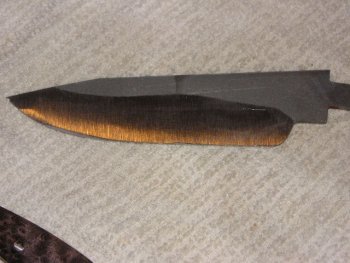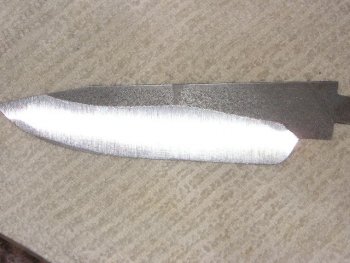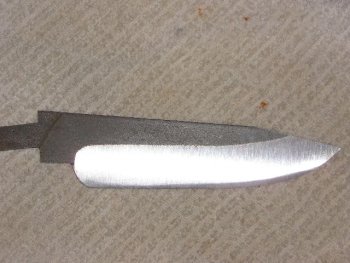Some excellent advice. Everyone has problems with this at first. I don't use a rest, ever, so I can't help you with that. Using a finer belt will help you troubleshoot the problem more safely. The pic suggests slightly inconsistent angles and unsteady pressure/hand placement. Go slowly with the grinder and practice your motions with a finer belt, making sure to keep consistent/uniform angles and hand pressure where needed, when walking the line up. Don't be afraid to make passes without walking the line up, just to true it all up. For myself I've noticed that feeling the uniformity of the sweeping pass is key; the pressure on the platen in accordance with uniform hand placement and consistent angles. If your form when grinding isn't uniform, then your lines won't be uniform either. Your smaller blades are easier to keep uniform because there is less real estate for your hand to travel and thus less opportunities to break the line.


 I can do smaller blades pretty good. But everytime I try to do a larger blade I have a heck of a time matching up both sides what is it I am doing to get such different results. I do grind off of a rest and I did build a new one and this is the first knife I have done but it should have been better because this rest is bigger?
I can do smaller blades pretty good. But everytime I try to do a larger blade I have a heck of a time matching up both sides what is it I am doing to get such different results. I do grind off of a rest and I did build a new one and this is the first knife I have done but it should have been better because this rest is bigger?
